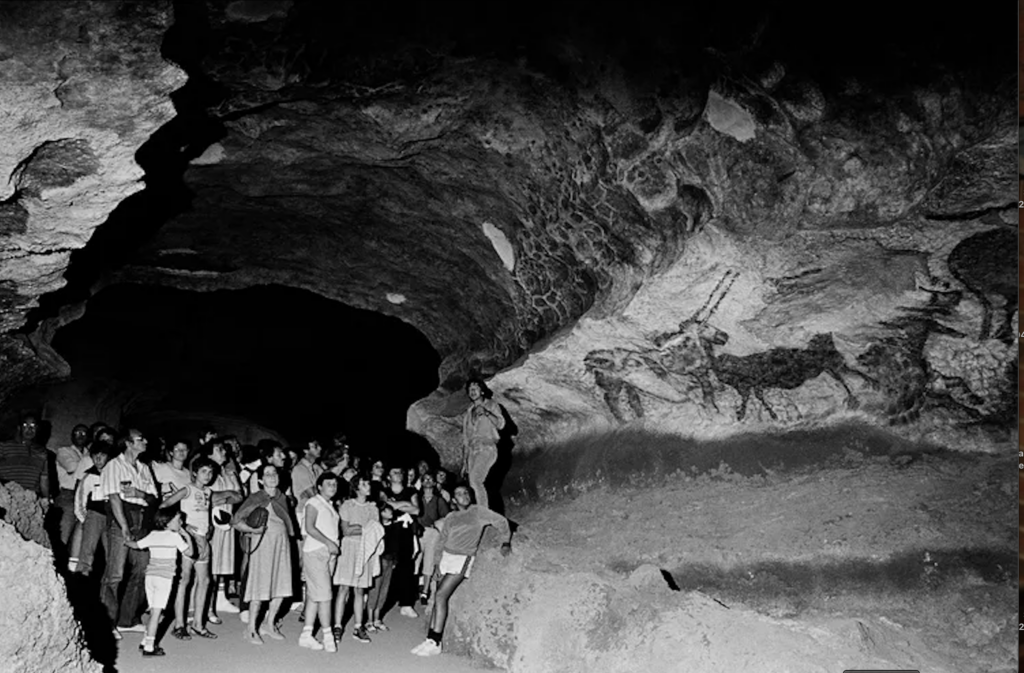One of the most outstanding things about archaeology is that anyone can be an archaeologist, whether intentional or not. Anyone has the power to make a discovery, and anyone can play a part in how history and our perception of it is changed forever. Chinese farmers accidentally found the Xian TerraCotta Army, and this discovery shed light on important information regarding daily life in the Chinese Qin dynasty. French soldier Pierre François Xavier Bouchard almost destroyed the Rosetta Stone, and had it not been found, scholars would not have been able to decipher the hieroglyphs of ancient Egypt, allowing for the understanding of ancient Egyptian language and culture.
This is precisely what happened in Montignac, France, 1940 to four teenagers, Marcel Ravidat, Jacques Marsal, Georges Agnel, and Simon Coencas, and most importantly, their dog. Under the impression that a hill near their town stood atop a series of underground tunnels that led to a secret manor, Marcel, accompanied by his dog, decided to look into foxholes littering the hill’s surface. The pair found a particularly large one, and, with his interest peaked, Marcel decided to come back a few days later with three friends and some tools. After a few minutes of digging, they found themselves looking down a 50-foot shaft that they ultimately decided to climb down. This is where they struck gold, though not in the way they’d expected.
In these tunnels, the group discovered a cavern 66 feet wide and 16 feet high, covered in 600 paintings and 1,500 engravings dating back to around 17,000 years ago, created by paleolithic humans. Pictures of horses, stags, and mythical creatures litter the walls, and only one human can be found, though he himself is half-bird. The paintings themselves are extraordinary in multiple ways. Many of the animals depicted are now extinct, such as the wooly rhinoceros, and the depictions are so grand in size and stretch even across the ceiling of the cave. The most remarkable aspect, however, is what the paintings tell us about the religion and religious practices of the Paleolithic peoples regarding the worshipping of animals.
While the finding of these caves is fervently important in regards to getting a broader and deeper understanding of human history, the discovery itself has also created a widespread discussion on how archaeological discoveries should be preserved and how they should be shown to the public. Since its discovery and its being opened to the public, the paintings of Lascaux have drastically deteriorated, especially due to the site’s vast popularity and commercialization. This presented a serious question regarding the balance between tourism and public education versus preserving history and artifacts. While the public should inherently have the right to visit archaeological sites due to their historical significance, the public also poses a significant threat to the well-being of such artifacts. In some instances, such overexposure can destroy them, as even light exposure and air temperature led to the degradation of Lascaux. Ultimately, the decision to close the Lascaux cave paintings to the public was wise, especially since numerous other resources allowed it to be seen. Tourism threatens not just the integrity of the Lascaux but many sites, such as the Colosseum, which has been continuously vandalized, and Stonehenge, which has been chipped away at by greedy visitors. How this can be prevented in the future is largely questioned, but it is evident that mass tourism is a true threat to the integrity of archaeological sites.

References :
Katunga, Faith. “The Significance of France’s Lascaux Cave Paintings Goes Beyond Their Age, Here’s Where to See Them.” TheTravel, July 10, 2023. https://www.thetravel.com/where-to-see-cave-paintings-in-france/.
“Lascaux Cave Paintings Discovered | September 12, 1940.” History.com, September 24, 2009. https://www.history.com/this-day-in-history/lascaux-cave-paintings-discovered.
Magazine, Smithsonian. “Finally, the Beauty of France’s Chauvet Cave Makes Its Grand Public Debut.” Smithsonian.com, April 1, 2015. https://www.smithsonianmag.com/history/france-chauvet-cave-makes-grand-debut-180954582/.
Mitchell, Robbie. “Sheer Fluke: 7 of the Most Amazing Accidental Discoveries in Archaeology!” Ancient Origins Reconstructing the story of humanity’s past, May 3, 2023. https://www.ancient-origins.net/artifacts-other-artifacts/accidental-archaeological-discoveries-0018380.
Semitour. “Lascaux 4 International Center of Cave Art.” Perigord.com, January 10, 2023. https://www.perigord.com/en/listings/sites-touristiques-visites/lascaux-iv/.
“Why Was the Lascaux Cave Closed to the Public?” TheCollector, September 21, 2023. https://www.thecollector.com/why-was-the-lascaux-cave-closed-to-the-public/.
Additional Links:

“How this can be prevented in the future is largely questioned, but it is evident that mass tourism is a true threat to the integrity of archaeological sites.” — What approaches are adopted by sites such as the Xi’an Terra Cotta Army to mediate the conflict between preservation and public education? Would these adjustments be applicable to the Lascaux, why or why not?